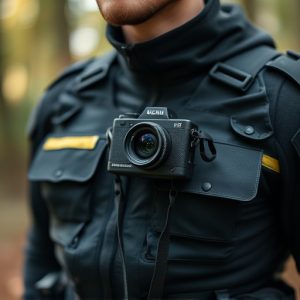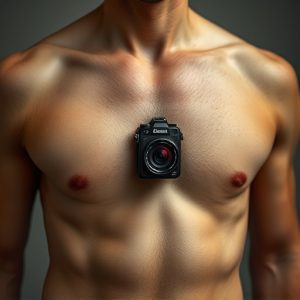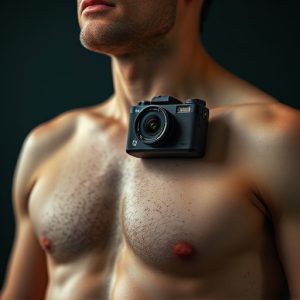Secure Recording with Discretion: The Guide to Hidden Personal Body Cameras
Hidden personal body cameras have revolutionized personal security and documentation, offering a dis…….
Hidden personal body cameras have revolutionized personal security and documentation, offering a discreet method for individuals to capture high-quality video and audio in diverse situations, from everyday activities to professional use by journalists and activists. These devices are equipped with motion activation, long-lasting batteries, and secure data storage, enabling users to monitor their surroundings covertly and provide valuable evidence in disputes or dangerous situations. They are designed with stealth in mind, integrating into everyday clothing, and come with advanced features like miniaturized components, high-quality imaging sensors for varied lighting conditions, noise-cancellation technology for clear audio, and computational algorithms for real-time data processing. Legal and ethical use of these cameras is crucial, necessitating adherence to surveillance and recording laws and respecting individuals' privacy rights. Users must employ these devices responsibly, with consideration for the context in which they are used, ensuring stability, quality settings, and secure data storage to maintain the integrity of recordings for official proceedings. In selecting a hidden personal body camera, users should prioritize high-resolution video, superior audio quality, extended battery life, and additional functionalities like motion detection, GPS tagging, and live streaming. These innovations empower users with enhanced security and peace of mind, while also raising important questions about privacy and transparency in an increasingly interconnected world.
In an era where personal security is paramount and accountability is key, the advent of hidden personal body cameras has revolutionized how individuals record their interactions. These discreet devices offer unparalleled protection, capturing audio and video without drawing attention. This article delves into the multifaceted world of these stealthy guardians, exploring their technical workings, legal implications, and best practices for use. Whether for personal safety, professional integrity, or journalistic authenticity, a hidden personal body camera can be an invaluable tool. We will guide you through understanding their capabilities, navigating legal frameworks, and selecting the perfect device to suit your needs.
Unveiling the Stealthy Guardians: The Rise of Hidden Personal Body Cameras
In recent years, the advent of technology has led to the development of innovative tools for personal security and documentation. Among these advancements, hidden personal body cameras have emerged as a significant leap forward in ensuring safety and accountability. These discreet devices are designed to be unobtrusive, blending seamlessly with everyday wear to capture high-quality video and audio without drawing attention. The rise of these stealthy guardians is a testament to the growing demand for personal protection in various scenarios, from law enforcement officers needing evidence in public encounters to individuals seeking a way to record their daily activities safely. The compact nature of these cameras allows users to monitor their surroundings covertly, providing a visual and auditory record that can be crucial in disputes or dangerous situations. With features like motion activation, long-lasting batteries, and secure data storage, hidden personal body cameras are becoming an indispensable tool for those looking to enhance their personal security while maintaining a low profile.
The integration of these devices into everyday life has not only transformed personal safety but also has implications for professional fields. For instance, journalists and activists use them to document events, ensuring they have evidence of what transpired. Similarly, concerned parents may opt for these cameras to keep an eye on their children’s well-being while nannies or caregivers are present. The clarity of the footage captured by these devices often surpasses expectations, providing detailed visuals and crisp audio that can be used for various purposes, from legal evidence to personal memory-keeping. As privacy concerns become more pronounced in today’s world, hidden personal body cameras offer a solution that empowers individuals to protect themselves and their interests without compromising on the subtlety of their presence.
Technical Nitty-Gritties: How Hidden Body Cameras with Audio Function
Hidden personal body cameras with audio have become increasingly sophisticated, blending seamlessly into everyday attire while capturing high-quality visual and auditory evidence. These devices are engineered with miniaturized components that can be integrated into clothing or worn discreetly against the body. They typically consist of a small camera module, a microphone array, secure data storage, and a rechargeable battery, all housed within an unobtrusive casing.
The camera component employs advanced imaging sensors capable of recording in various lighting conditions, ensuring that footage is clear and usable regardless of the environment. The audio functionality is equally impressive, equipped with noise-cancellation features to filter out ambient sounds and focus on capturing clear, intelligible audio. This dual capability makes them particularly useful for law enforcement officers, journalists, private investigators, and individuals who require a reliable record of events. The integration of these devices is achieved through a combination of wearable technology and computational algorithms that handle real-time data processing. This allows for immediate review of the footage directly on the device or via secure cloud transmission, depending on the model. Users can also utilize Bluetooth or Wi-Fi connectivity to transfer data to a smartphone or computer, where they can be reviewed, shared, or stored safely. The privacy and security of the recordings are paramount, with encryption options available to protect sensitive information. These hidden body cameras with audio are designed to be user-friendly, yet robust enough to handle the rigors of daily use, ensuring that users have a reliable means of documenting their experiences when and where they need it most.
Legal Boundaries and Ethical Considerations in Using Hidden Body Cameras
The deployment of hidden personal body cameras raises significant legal and ethical considerations. Legally, the use of such devices is governed by privacy laws and regulations that vary by jurisdiction. It is imperative for users to be well-versed in their local surveillance and recording statutes to avoid unintentional violations that could lead to legal repercussions. These devices must not be used to invade personal spaces or capture recordings without consent, as this would likely infringe upon individuals’ rights to privacy. Employers and law enforcement agencies using hidden body cameras must establish clear policies that align with legal standards, ensuring transparency and accountability in their use.
On the ethical front, the use of hidden personal body cameras necessitates a careful balance between the need for transparency and the respect for individual privacy. Ethical guidelines mandate that individuals using these devices should have a legitimate reason to record, such as ensuring safety or monitoring compliance with regulations. It is crucial to consider the implications of recording in sensitive contexts where consent might not be feasible, such as in emergency situations. Users must also be mindful of the potential for misuse and the psychological impact on those being recorded without their knowledge. Ethical use of hidden body cameras involves a commitment to upholding privacy while promoting truthfulness and preventing disputes over events that occur when no one is watching.
Maximizing Your Recording's Integrity: Best Practices for Deployment and Data Management
When deploying a hidden personal body camera, it is imperative to adhere to best practices that ensure the integrity and legality of the recordings. The primary objective is to capture high-quality footage while maintaining the subject’s privacy and compliance with local laws and regulations. Initially, consider the context in which the camera will be used; its placement should be discreet yet positionable to cover critical incidents effectively. Ensure that the device is securely fastened to avoid accidental removal or tampering, which could compromise the evidence. The recording settings, such as resolution, frame rate, and audio clarity, should be optimized for clarity and detail, as poor quality can lead to inconclusive footage.
Data management post-recording is equally crucial. Regularly update the software to address security vulnerabilities and improve functionality. Implement a robust data storage solution that protects against unauthorized access while allowing for easy retrieval when needed. Establish protocols for data backup, ensuring that recordings are safeguarded in multiple locations to prevent loss due to device failure or other unforeseen events. Additionally, establish clear guidelines for who has access to the footage and under what circumstances it can be reviewed or shared, preserving its admissibility in official proceedings. By following these best practices, users of hidden personal body cameras can maximize the integrity and utility of their recordings while upholding ethical standards and legal requirements.
Selecting the Ideal Hidden Personal Body Camera: A Buyer's Guide to Features and Performance
When considering a hidden personal body camera, it’s crucial to evaluate various features and performance metrics to ensure that the device meets your specific needs. The compact nature of these cameras means they can be easily concealed, making them an excellent choice for individuals seeking to record interactions discreetly. Look for models with high-resolution recording capabilities to capture clear and detailed footage. The quality of the audio is equally important; a camera equipped with multiple microphones and noise reduction technology will provide crisper sound even in challenging environments. Additionally, a long battery life ensures that your camera is ready for use whenever necessary, while built-in memory or support for high-capacity microSD cards allows for extensive recording times without frequent data management.
In terms of functionality, a hidden personal body camera with advanced features such as motion detection, GPS tagging, and real-time streaming capabilities can significantly enhance the user experience. Motion detection can ensure that your device only records when there is movement within the field of view, conserving battery life and storage space. GPS tagging provides precise location data for each recording, which can be invaluable for locating events or ensuring accountability. Real-time streaming allows users to monitor situations remotely, offering peace of mind that footage is being transmitted securely to a chosen platform or cloud service. When selecting your hidden personal body camera, consider these features and how they align with your intended use, from everyday safety to professional surveillance tasks.


